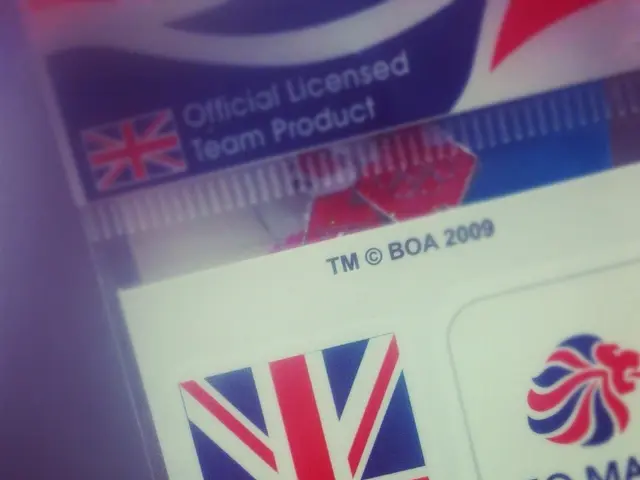Setups for Overnight Stays in Rocky Mountain National Park: Exploring Ideal Campsites
Experience the unforgettable beauty of Rocky Mountain National Park! Stand in awe as towering mountain peaks that reach 14,000 feet soar above glacier-carved U-shaped valleys. Explore dense coniferous forests, snow-fed alpine lakes, and observe abundant wildlife roaming freely. With countless adventures to be had, such as scenic park road drives, mountain hikes, and leisurely lake strolls, there's something for everyone.
Plan a multi-day camping trip to truly immerse yourself in the park's wonders. Whether you choose to camp inside the park or at an established or dispersed camping location outside of it, there are plenty of options to suit your preferences. Follow this guide to make the most of your park camping experience!
The Best Time of Year for a Rocky Mountain National Park Camping Trip
Technically speaking, Rocky Mountain National Park remains open year-round, but most of the park is inaccessible during the winter months due to its high elevation and snow coverage. Trails and roads become more accessible in late May to early October.
Springtime sees wildflowers blooming, but expect snow on trails, especially at higher elevations. By mid-July, many hiking trails are snow-free and park temperatures are highest, as are crowd levels. As you move into fall, temperatures begin to drop, and the leaves change colors. Each season offers unique opportunities for a Rocky Mountain National Park camping trip, but remember that many campgrounds are only open seasonally from late May to September or early October.
Rocky Mountain National Park Campgrounds
Within the park, there are five campgrounds that offer both tent and RV sites. These popular sites book up quickly, so advance reservations at recreation.gov are essential. Dispersed camping within the park is not allowed, so beware of park rangers who may kick you out and issue hefty fines for sleeping in vehicles overnight in parking lots.
Established Campgrounds in the Park
- Aspenglen Campground: This 52-site campground is located just beyond the Falls River Visitor Center. It offers a few winter campsites available on a first-come, first-served basis from late October to late May. The full campground is open from late May to mid-October with amenities such as toilets, picnic tables, fire grates, and seasonal potable water.
- Glacier Basin Campground: This 150-site campground is located near the center-east part of the park, providing close access to trails at Sprague Lake, Bear Lake, and beyond. It seasons open from May to early September.
- Longs Peak Campground: This southernmost campground on the park's eastern side is about a 20-minute drive from Estes Park. It has a shorter season, open from early July to September due to colder temperatures.
- Moraine Park Campground: The largest campground in the park with 244 sites, it is expected to open in the summer of 2025. The campground is located just beyond the Beaver Meadows Entrance into Rocky Mountain National Park.
- Timber Creek Campground: This 98-site campground is the only campground located on the west side of the park and offers great access to many park wonders. It is a 15-minute drive north of the Grand Lake Entrance Station and Kawuneeche Visitor Center. The campground is open from late May to September.
Established Campgrounds Near Rocky Mountain National Park
Finding camping near Rocky Mountain National Park isn't difficult. There are numerous established national forest and private campgrounds on both the east and west sides.
East Side of the Park
- Meeker Park Overflow Campground: This 29-site national forest campground is a 20-minute drive from the Beaver Meadows Park Entrance and a 6-minute drive from the Longs Peak Trailhead. It offers first-come, first-served sites.
- Olive Ridge Campground: This campground has 56 sites and is about 25 minutes from the Beaver Meadows Entrance while still being a short drive from hiking trails in the southeastern part of the park.
- Peaceful Valley Campground: This 17-site national forest campground is 40 minutes outside the Beaver Meadows Park Entrance. Camping sites have fire grates, picnic tables, vault toilets, and running water.
- Pawnee Campground: Situated in the Brainard Lake Recreation Area, this 47-site national forest campground is about an hour from the park entrances near Estes Park and half an hour from the Wild Basin area's hiking trails.
- Rainbow Lakes Campground: This 18-site first-come, first-served national forest campground is about an hour's drive from the Estes Park entrances and 45 minutes from the Wild Basin region. The campground is basic but offers toilets, fire grates, and picnic tables. Other amenities include access to treated lake and stream water.
- Camp Dick Campground: This national forest campground near Lyons, Colorado, is a 40-minute drive from the Estes Park entrances and a 20-minute drive from the Wild Basin Area. It offers power, water, picnic tables, and fire pits.
- Yogi Bear's Jellystone Park Camp-Resort Estes Park: This private campground in Estes Park offers a variety of sites and cabins, lesser than 20 minutes from the park entrance. Amenities include a general store, wifi, a playground, a pavilion, sports courts, and laundry.
West Side of the Park
- Green Ridge Campground: This 79-site national forest campground is located 12 minutes from the western park entrance and sits on Shadow Mountain Reservoir, providing excellent opportunities for hiking, fishing, and boating.
- Stillwater Campground: This 129-site national forest campground is located on Lake Granby's western shore, a 15-minute drive from the park entrance. Advanced reservations are required.
- Sunset Point Campground: This 25-site, first-come, first-served national forest campground is alongside Lake Granby. It offers fire grates, picnic tables, drinking water, and restrooms.
- Willow Creek Campground: This 32-site first-come, first-served national forest campground is located along Willow Creek Reservoir and is a 25-minute drive from the western park entrance. Campground amenities include bathrooms, drinking water, picnic tables, and fire grates.
- Sun Outdoors Rocky Mountains: This private campground is located in Granby on the west side of Rocky Mountain National Park and offers power, water, picnic tables, and fire pits. Other amenities include bathrooms with showers, a pavilion, a general store, a playground, and outdoor activities.
Tips for Rocky Mountain National Park Camping
Whether camping in the established national park campgrounds or finding your way to dispersed camping outside the park, these tips will help make your Rocky Mountain National Park camping trip run smoothly.
Planning and Reservations
- Advance Planning: The busy summer months require careful planning and reservations well in advance to secure campsites and permits.
- Timed Entry Permit: From late May to mid-October, a timed entry permit is required to enter most areas of the park during daylight hours.
- Dispersed Camping: If dispersed camping outside the park, find a suitable camp spot early, especially on weekends.
Weather Preparedness
- Layered Clothing: With its high elevation, temperatures can vary significantly, so pack layers for both daytime and nighttime activities.
- Prepare for Weather Changes: Rapid weather changes, including afternoon thunderstorms, are common. Always be prepared with adequate rain gear.
- Check Weather and Road Conditions: Regularly check the official Rocky Mountain National Park website for up-to-date weather and road condition updates.
On Your Way to the Park
- Fuel Up: There are no gas stations within the park, so fill up at nearby stations either in Estes Park or Grand Lake before entering the park.
- Go Grocery Shopping: Plan to stock up on snacks and meals before entering the park, as there are no restaurants or food options within the park.
- Pack Firewood: Gathering firewood within the park is prohibited. Instead, you'll need to buy firewood at local shops, or within the park if fires are permitted.
At the Park or Campground
- Food Storage - Bear Lockers: If camping in any established campground, you'll have access to bear lockers for securing food and scented items. At night, store all food, beverages, and scented items inside bear lockers.
- Don't Expect Cell Service: There is minimal to no cell service throughout most of the park.
- Obey Fire Regulations: Fire regulations vary by area and season. Check fire signs at campground entrances for updates.
- Leave No Trace: Practice the 7 principles of Leave No Trace to minimize your impact on the park’s natural beauty.
Renting an RV for Your Rocky Mountain National Park Camping Trip
For a hassle-free camping experience, rent an RV from our website. Stock your home on wheels with a bed, kitchen set up, transportation, and many extra accessories that make your journey comfortable and convenient. With a pickup location just an hour and a half from Rocky Mountain National Park, this adventure is calling your name!
Leave a Reply
Your email will not be published. Required fields are marked *.
- To experience the beauty of Rocky Mountain National Park in a more immersive way, consider planning a multi-day camping trip during the summer months when trails and roads are more accessible.
- When choosing a campground, consider both the established campgrounds within the park and the numerous established national forest and private campgrounds on both the east and west sides of the park.
- Each season offers unique opportunities for a Rocky Mountain National Park camping trip, but remember that many campgrounds are only open seasonally, usually from late May to September or early October.
- Regardless of where you choose to camp, follow the Leave No Trace principles to minimize your impact on the park's natural beauty and ensure a comfortable and enjoyable trip for all campers.




